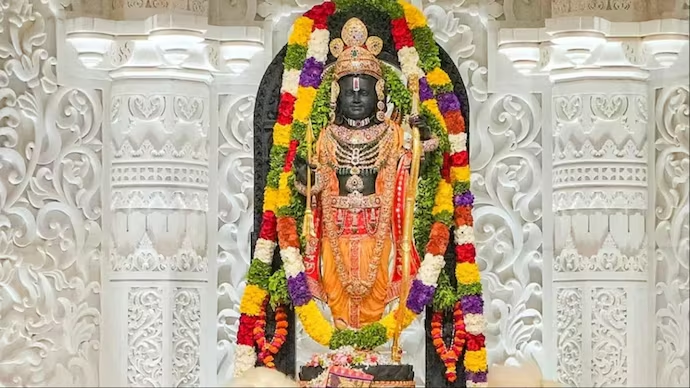“About a year after starting work on the ‘Surya Tilak’ at Ram Mandir in Ayodhya, sunrays will grace the Ram Lalla idol on 17 April, on the occasion of Ram Navami,”, S K Panigrahi, the project’s chief scientist at CBRI Roorkee, tells Swarajya.
At around 12 pm on Wednesday, 17 April, the rays of the Sun will fall on the forehead of the 51-inches tall murti that represents the five-year-old form of Shri Ram.
The sunlight will adorn Ramlalla’s forehead with a circular ’tilak’, measuring 75mm. This phenomenon will last for three to four minutes and will symbolise a Surya tilak of the Suryavanshi.
On every Ram Navmi hence, the garbhagriha will be illuminated thus by the sun. This draws inspiration from the thirteenth-century Sun temple at Konark in Odisha.

The team setting up the Surya tilak started the special project in April 2023, with studies and calculations conducted by experts from the Council of Scientific and Industrial Research (CSIR), Central Building Research Institute (CBRI), Roorkee, and Indian Institute of Astrophysics (IIA), Bengaluru.
The chief scientist says, “There had been many challenges, including the temple’s location in a dense settlement, weight and thickness of the stone structure, fluctuating sun positions each year, with the shifting dates for Ram Navmi.”
“However, the latest challenge was adapting the mechanism’s design to match the temple’s construction progress.”
The original design assumed three floors of the temple. However, the design was modified to work at the two floors that are currently in place.
“Now, sunlight will enter the garbhagriha through openings on the second floor, which will revert to the previous design once the third floor and shikhara of the temple are completed.”, he added.
At noon, when the sun reaches its zenith above the temple, its rays will penetrate the garbhagriha and will be redirected through high quality lenses within the sanctum, ultimately resting upon the forehead of Ramlalla.

In previous interactions with Swarajya, Panigrahi explained, “The tilt mechanism will redirect sunlight through the designed apparatus of pipes and lenses. Only brass was employed in crafting our system of pipes and the rays will be diverted through an arrangement of four lenses, starting from the third floor of the temple, to reach the garbhagriha.”
“The concept has been designed incorporating the shifts for the next 19 yearly cycles, and the same positions will recur every 19 years.”
The high-quality lenses have been crafted by Optica in collaboration with the Indian Institute of Astrophysics Bangalore.
“It has been a unique experience for me and the team to bring this divine idea to reality for the Ram Mandir. A trial was conducted on 8 April, and now the Surya Tilak will grace the face of Ramlalla on Ram Navami,” he shared.
Additionally, the architects behind the temple design asserted that this concept seamlessly merges astronomy, science, design, and construction technology.
Architect Ashish Sompura, stated, “the significance lies in Surya Dev performing the Surya Abhishek of Ramlalla at his birth, highlighting the divine connection with the sun.”
Ram Navmi, celebrated on the ninth day of the first month of the Hindu calendar, typically falls in March-April, marking the birth of Shri Rama.
A control room has been established for this purpose, and officers and staff from several departments have been assigned crucial roles. The control room will operate around the clock.
The control room has set up procedures to guarantee perfect collaboration across several departments. For a 24-hour shift, officers and staff will be assigned in three shifts.
Teams from the city’s health department, Ayodhya Municipal Corporation, and city power department have also been placed on notice in addition to the police department, in order to facilitate the prompt completion of tasks allocated to all departments.
The Uttar Pradesh Chief Secretary had a preparatory meeting on Saturday to discuss the arrangements for Ram Navami. Starting on April 9 and ending on April 17, Ayodhya is hosting the Navami fair.
Read More: Ram Mandir Inauguration: Ayodhya set for grand Pran Pratishtha ceremony today!








